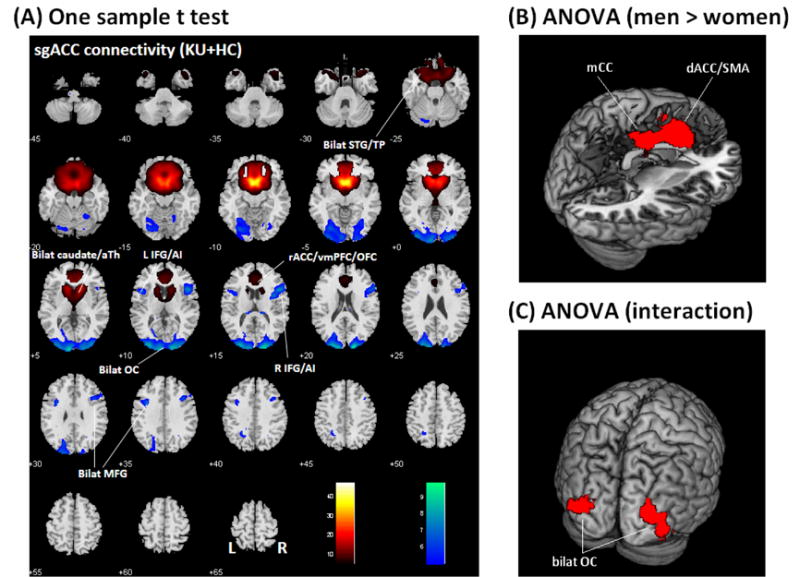Figure 2.

(A) One-sample t test of whole brain functional connectivity of the subgenual anterior cingulate cortex (sgACC), p<0.05 FWE, in all subjects. Positive and negative connectivities are shown each in warm and cool color. Scale represents voxel T value. Neurological orientation: R = right. ACC: anterior cingulate cortex; aTh: anterior thalamus; Bilat: bilateral; IFG/AI: inferior frontal gyrus/anterior insula; L: left; MFG: middle frontal gyrus; OC: occipital cortex; OFC: orbitofrontal cortex; R: right; STG: superior temporal gyrus; TP: temporal polar cortex; vmPFC: ventromedial prefrontal cortex. ANOVA showed (B) greater activation in the dorsal anterior cingulate cortex and supplementary motor area (dACC/SMA) and mid-cingulate cortex (mCC) in men, as compared to women; and (C) an interaction effect, with men showing greater connectivity than women in HC, as compared to KU, in bilateral occipital cortex (OC). Results of ANOVA were examined at a threshold of p<0.001 uncorrected, combined with cluster p<0.05, FWE corrected.
